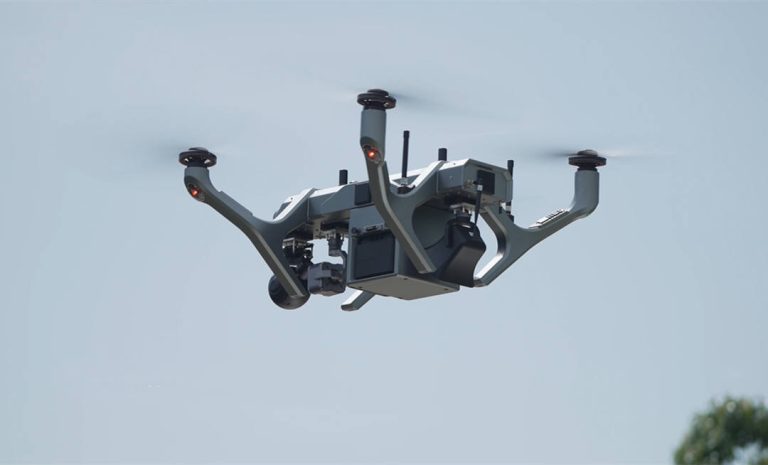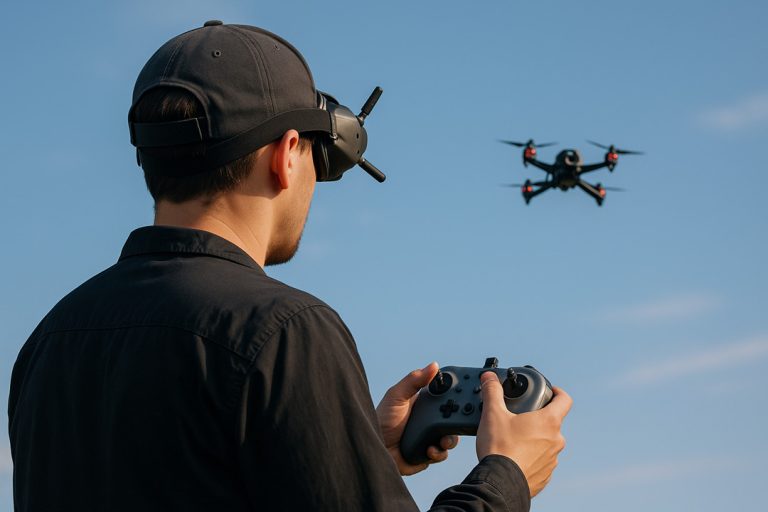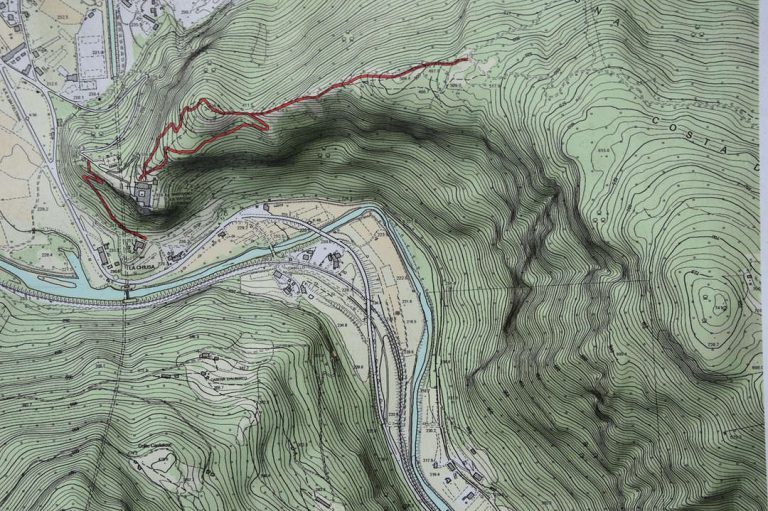A Comprehensive Beginner’s Guide to Drone Photogrammetry
Recent developments in digital photography, software, and drones now make it possible to carry out high-precision photogrammetric surveys at relatively low cost over a wide range of scales. Photogrammetry drones are now practiced in many fields: archaeology, heritage architecture, inspection of structures, emergency surveys, etc.
Interested in drone photogrammetry and not sure where to start? Or maybe you are already a user of this measurement technique and you wish to deepen your knowledge and skills. Then you've come to the right place!
Factors to consider when choosing a photogrammetry drone
When selecting a photogrammetry drone, several key factors should be carefully considered to ensure optimal performance and suitability for your specific needs. Let's explore these factors in detail:
Flight time
The flight time of a drone is crucial as it determines how long it can remain airborne to capture data. Look for a drone with the longest flight time, typically exceeding 20 minutes, to ensure sufficient coverage of larger areas without frequent battery swaps. Consider factors like battery capacity, power management efficiency, and the weight of the additional payload.
Transmission range
The transmission range refers to the maximum distance at which the drone can communicate with the remote controller or ground station. Opt for long-range drones, preferably over 2 kilometers, to maintain a stable and reliable connection, especially when operating in remote or challenging environments.
Quality of the drone's camera
The camera's quality plays a vital role in capturing high-resolution images for photogrammetry. Assess the following parameters:
Dynamic range: Look for a camera with a wide dynamic range that can handle scenes with varying lighting conditions. This ensures that details in both bright and dark areas are properly captured, resulting in accurate and visually pleasing photogrammetric outputs.
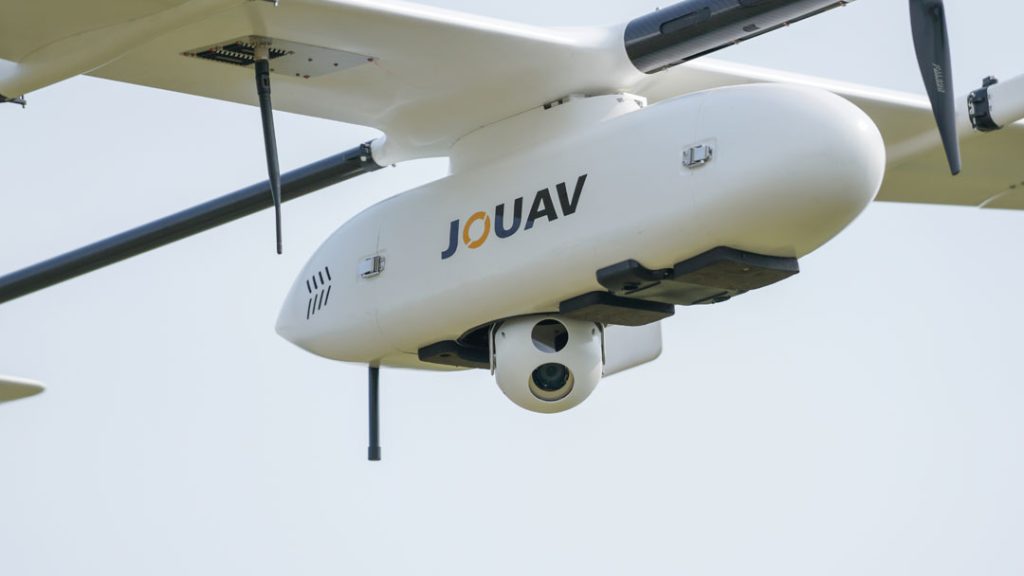
Lens quality: Opt for a drone with a high-quality lens that minimizes distortions, aberrations, and vignetting. A well-designed lens reduces image distortion and captures sharp and clear images, enhancing the accuracy of the photogrammetric process.
Global shutter vs. rolling shutter: Global shutter cameras capture images simultaneously across the entire sensor, minimizing motion artifacts and improving accuracy. In contrast, rolling shutter cameras capture images line by line, potentially introducing distortions in fast-moving scenarios. Prefer drones with global shutter cameras for precise and artifact-free results.
Aperture: The aperture determines the amount of light entering the camera and affects image sharpness and depth of field. Opt for drones with adjustable apertures or wide fixed apertures (e.g., f/2.8 or lower) to accommodate various lighting conditions and achieve optimal image quality.
Photogrammetry accuracy
Accuracy is crucial in photogrammetry. Evaluate the drone's positioning system, such as GPS or GNSS, and its accuracy specifications. Look for drones that offer high positional accuracy, typically expressed in centimeters, to ensure precise georeferencing and measurement accuracy in the final output.
Photogrammetry software compatibility
Ensure that the drone's captured data is compatible with popular photogrammetry software solutions. Check if the drone manufacturer provides integration or compatibility with commonly used software packages for data processing and 3D reconstruction. This compatibility ensures a seamless workflow and the ability to leverage advanced software functionalities for analysis and visualization.
RTK vs. PPK
Consider whether real-time positioning accuracy or post-processed accuracy is more important for your project. Real-Time Kinematic (RTK) systems provide instantaneous positioning corrections during flight, while Post-Processed Kinematic (PPK) systems apply corrections after data collection. Choose the system that best suits your specific project requirements and accuracy needs.
Drone types
Evaluate the advantages and limitations of different drone types:
- Fixed-wing UAVs offer longer flight times and larger coverage areas, making them suitable for large-scale mapping projects that require extended flight endurance and efficient coverage.
- Multirotor drones provide more flexibility in terms of flight maneuvers, hovering capabilities, and precise data collection. They are ideal for smaller areas or projects that require detailed inspection or close-up imaging.
- Hybrid VTOL (Vertical Take-Off and Landing) drones combine the benefits of fixed-wing and multirotor drones. They offer both efficient mapping capabilities and versatile maneuverability, making them suitable for various applications, including surveying, inspection, and mapping of complex terrains.
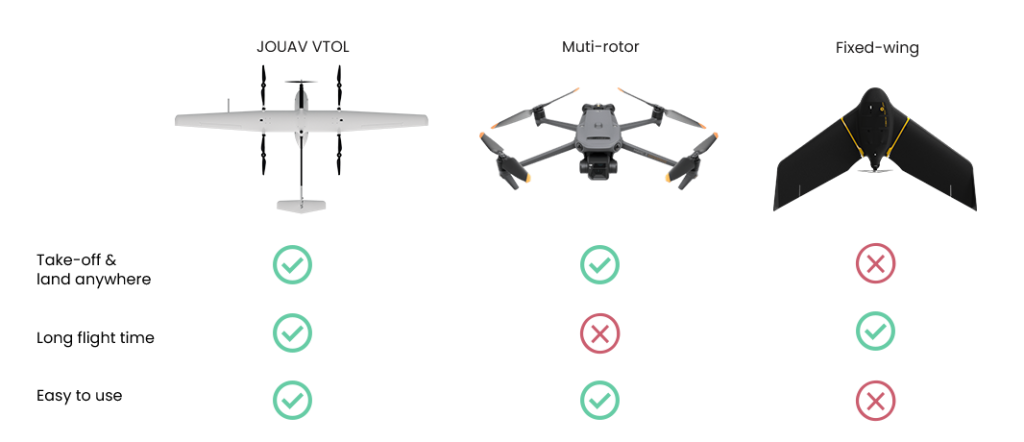
What is drone photogrammetry?
In short, drone photogrammetry uses a drone to capture a large number of two-dimensional images over a geographic area and compiles them into accurate three-dimensional terrain models and orthomosaic maps with specialized photogrammetry software.
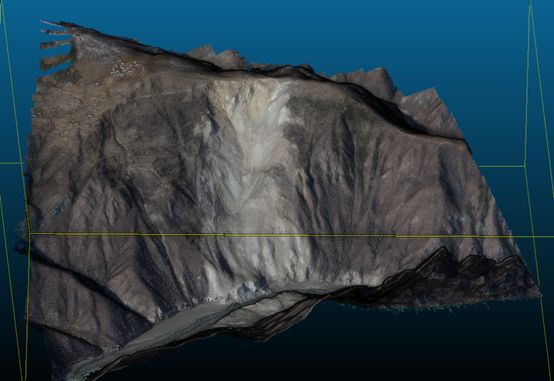
More than just a collection of photographs, drone photogrammetry makes it possible to see the same ground point from different angles and altitudes. From there, you can easily create a 3D map that includes a range of useful visual cues, such as color and texture.
Photogrammetry first originated in surveillance and reconnaissance and has been used for 170 years. During World War I, pilots combined photography with manned flights to gather intelligence from behind enemy lines.
Without context, photographs alone were of little value, so these pioneers used local landmarks and landscape features to determine the direction of objects in images.
In the decades that followed, these practices would be evolved with the appearance of new tools, from stratospheric U2 aircraft to advanced weather satellites to modern drone photogrammetry.
Today's photogrammetric maps are constructed using advanced GIS software to produce surveyor-level measurements of landscapes and infrastructure. These maps are detailed enough to provide valuable insight into environmental conditions in the field.
How does drone photogrammetry work?
Drone photogrammetry is a two-stage process, including image capture and image processing.
Image capture: The first step is to capture the images needed for the project. This can be done with a still camera or video camera mounted on a drone. The 3D modeling drone will capture a large number of high-resolution photos of an area that overlaps each other to make the same point on the ground visible from different angles and elevations.
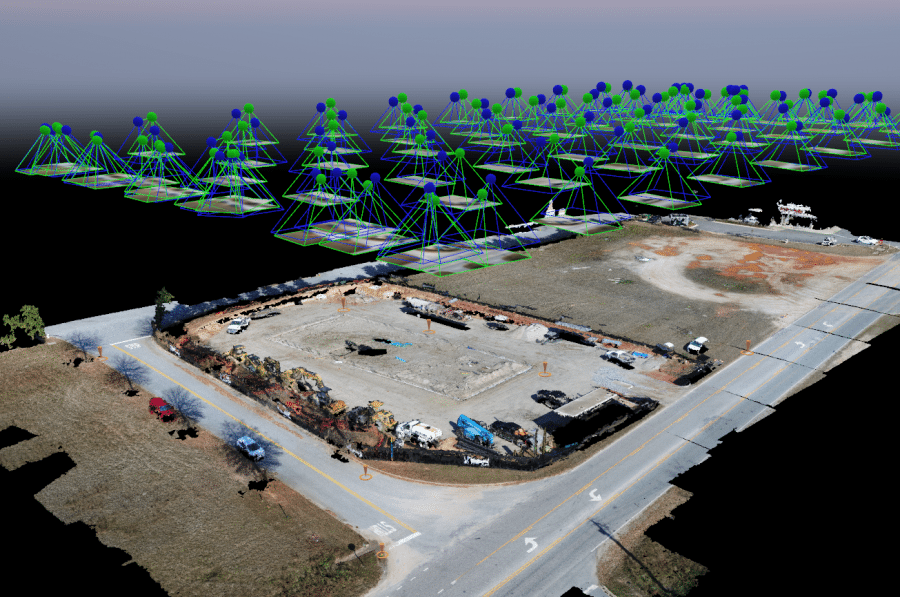
Source from emjcorp.com
Image processing: The aerial photos are then processed manually or using photogrammetry software, which combines or “stitches” the images into a single high-resolution orthomosaic aerial map and 3D models. Photogrammetry software corrects for distortions in the camera sensor and lens as well as errors caused by variations in the terrain, resulting in high-quality maps and 3D models.
Benefits of drones for photogrammetry
Drones can be a useful tool for photogrammetry, resulting in the following benefits:
Improved efficiency and accuracy: drone photogrammetry makes it possible to obtain a large amount of detailed information about the target area quickly and remotely. Since drones can fly lower than manned aircraft and are also equipped with the most advanced technology, which delivers a 3D model with accuracy up to centimeter level.
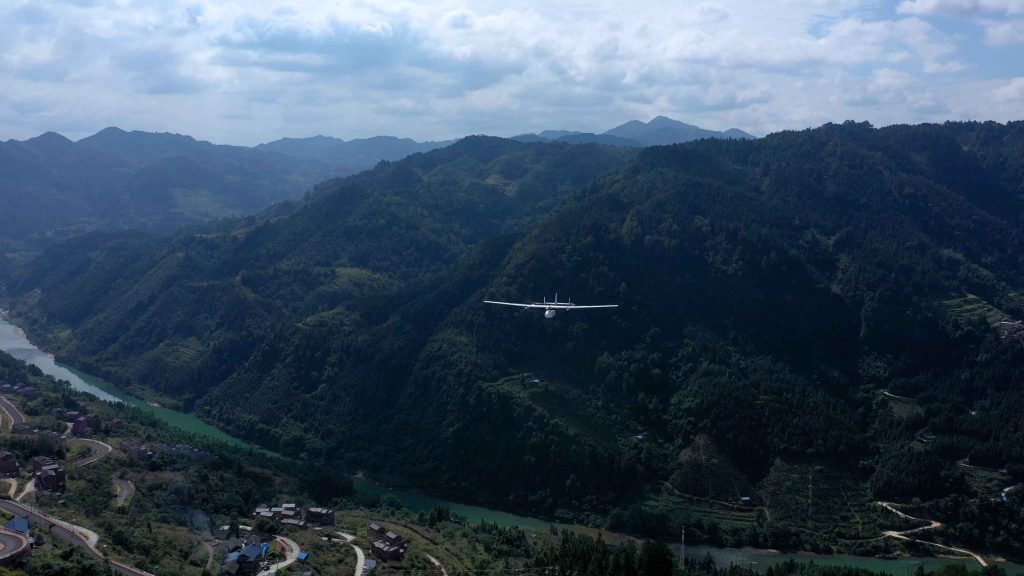
Enhanced safety: photogrammetry drones allow you to capture images from remote locations and transmit them securely to computer systems, allowing surveyors to easily access data in hard-to-reach or unsafe areas, such as places with severe volcanic activity, and crime or war, complex terrain, and harsh weather conditions.
Cost-effective solution: drone photogrammetry is an accessible method. Due to the financial factor, aerial photogrammetry was restricted to large engineering companies and public agencies. With the arrival of drones, values have dropped considerably, which makes it possible to hire this type of service even by small and medium-sized organizations.
How accurate is drone photogrammetry?
Each step in the process of collecting data and creating output from the drone has the potential to add a small element of the error to the final result. Several variables affect the overall accuracy of drone photogrammetry, including camera size, number of photos collected, photo overlap ratio, flight altitude, GPS signal strength, and ground sampling distance (GSD).
With the CA-103 61MP full-frame camera and a PPK GNSS receiver, the JOUAV CW series VTOL drone is capable of achieving a Ground Sampling Distance of 5-8mm per pixel, depending on terrain and flight altitude. This means the best possible relative accuracy in the model would be down to 1cm horizontal (x-y) and 1.5cm vertical, enabling precise spatial and volumetric analysis.
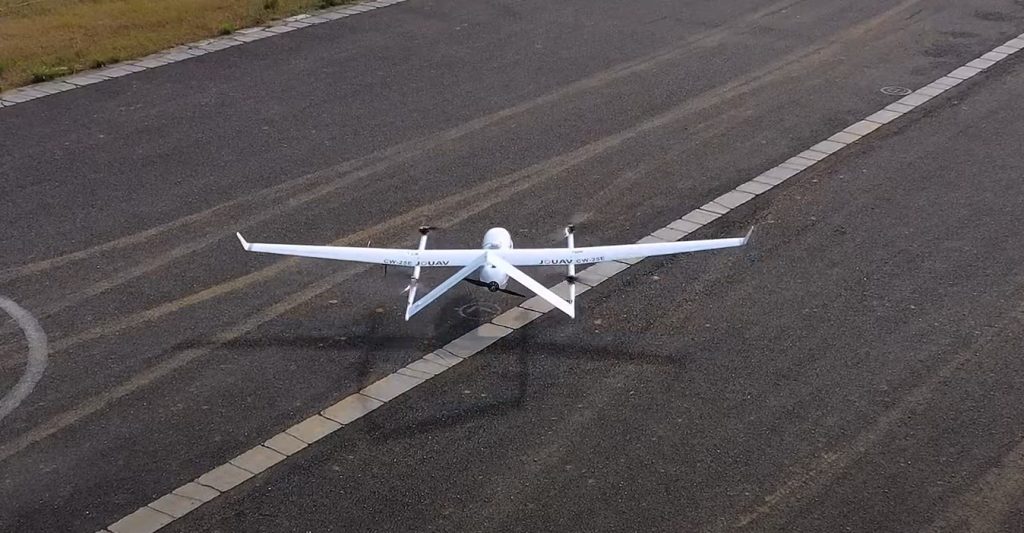
Real-world applications for drone photogrammetry
The following is the full overview of drone applications of photogrammetry:
Oil & gas
Oil and gas companies use drone inspection typically for pipeline construction and infrastructure maintenance, and also rely on them to remotely inspect and observe equipment, infrastructure components, and other company assets.
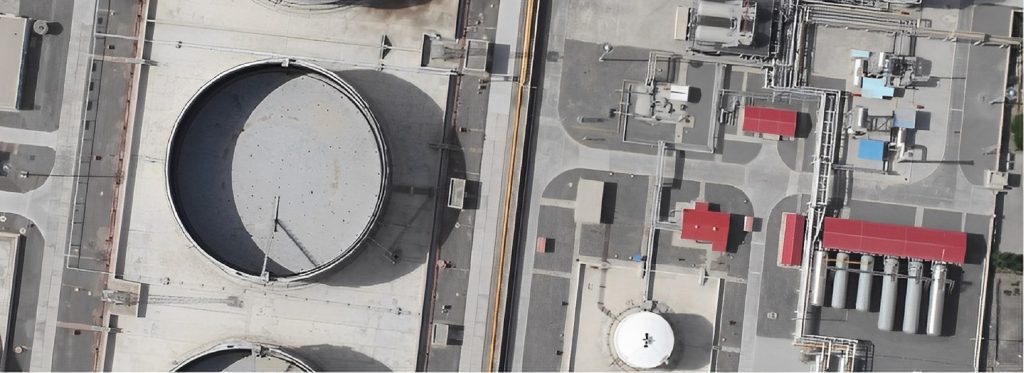
Drones can provide a 360-degree view of objects to monitor site operations and keep a close eye on new facilities. The AI tracking function of the drones can also automatically identify and locate damage or leaks, helping to speed up repairs and minimize local impact.
In addition, remote monitoring with drones is now making fully automated offshore oil and gas inspection a reality.
Mining & quarries
There is a wide range of real applications of drones in mining, from surveying, inventory management, and stockpile estimation, to hazardous gas and leakage detection.
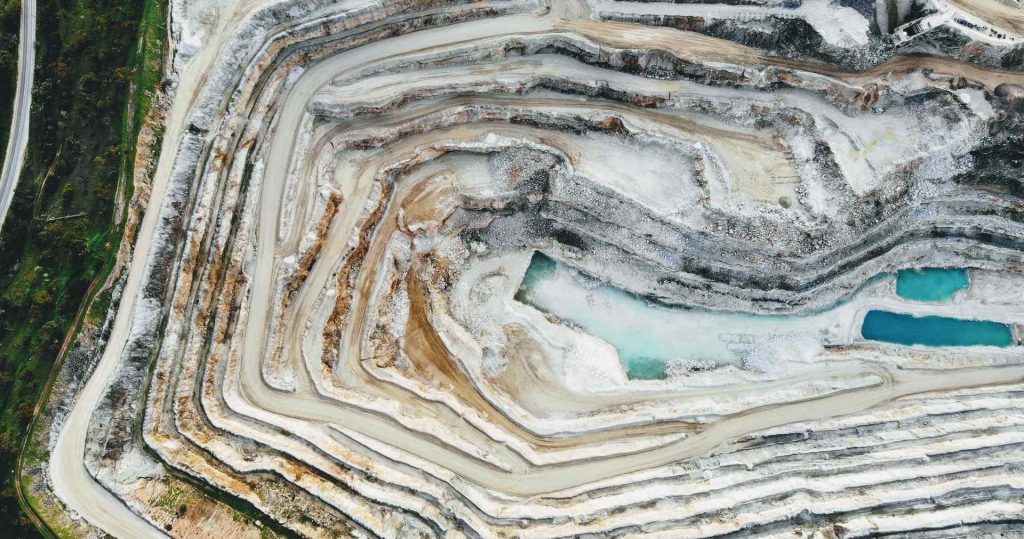
Drone photogrammetry can be used to generate detailed digital surface models, digital terrain models, and 3D models of a mining site, so you can easily perform very accurate volume calculations.
Using accurate site models generated from aerial drone imagery, mine managers can now more effectively design and manage the state of road construction at mines and monitor site progress on a weekly or monthly basis.
With the high-resolution images from drones, mining companies can inspect hard-to-access places for identification of crevices, erosion, wall damage, and any other potential damages. This has gone a long way towards preventing accidents and ensuring the safety of workers.
Agriculture
For companies managing large areas of land, drone photogrammetry can be used to capture images of crops. With these bird's eye views, they can detect crop growth, estimate crop yields, and identify issues like soil erosion and crop diseases.
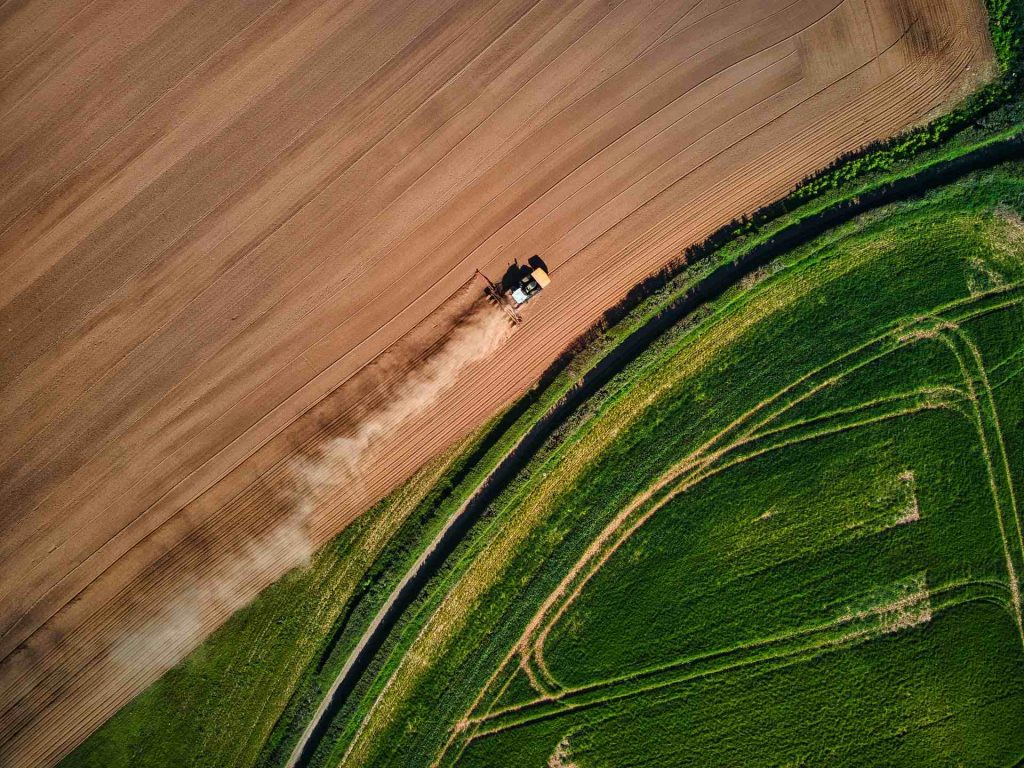
The drones can carry different payloads at the same time, providing farmers with real-time and accurate diversified data that they can act on immediately.
Utilities
Photogrammetry is often used by utility companies to measure infrastructure in remote areas such as power line inspection, solar farm inspection, and wind farm inspection.
Photogrammetry with drone can be used to prepare for maintenance work and repairs before engineers arrive on site, greatly reducing the manpower and resources required for infrastructure safety and improving worker safety.
Environmental monitoring
There is also a strong demand for UAV photogrammetry in environmental monitoring. They use photogrammetry to study issues such as land change, pest infestation, invasive plant growth, wildfire risk, and more.
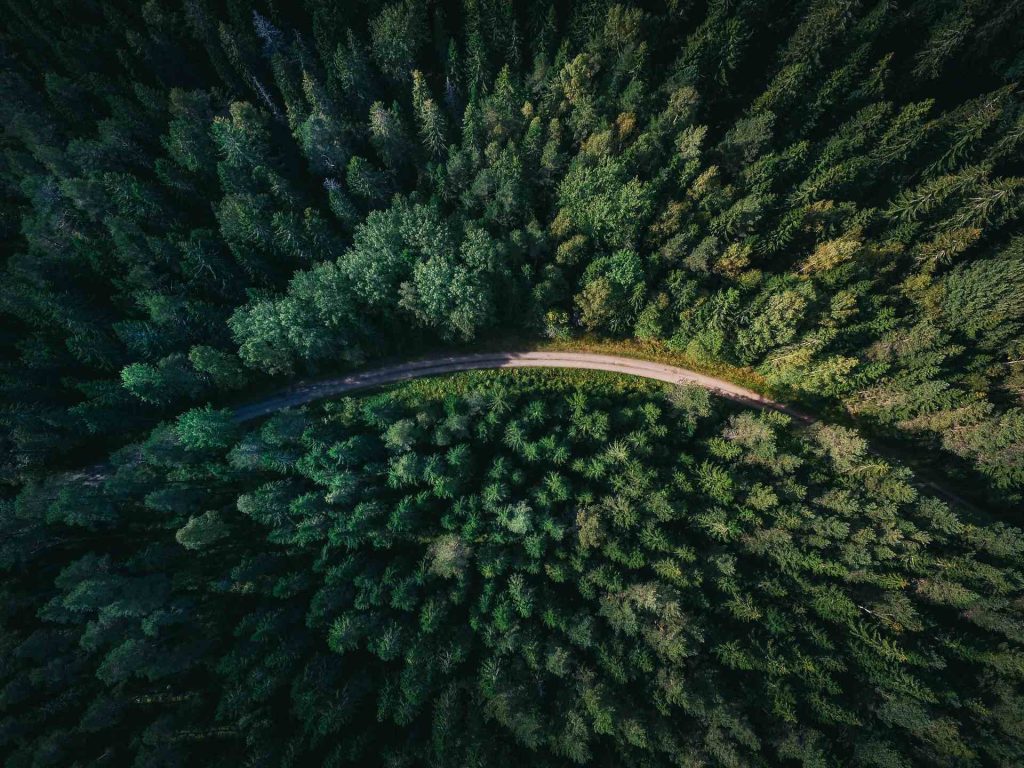
Drones are increasingly popular with first responders, who can use drone footage of the aftermath of a flood or fire to develop rescue strategies and reduce risk later on.
5 Best Drones for photogrammetry
Now that you already know that not just any drone is good for photogrammetry and, more to the point, that there are many requirements that a mapping drone needs to meet, we're going to show you the best photogrammetry drone options on the market.
An overview of the top 5 photogrammetry drones:
Drone type | Six-rotor | VTOL | VTOL | VTOL | VTOL |
Flight range | 30km | 30/50km | 30/50km | 50/100km | 100/200km |
Payload capacity | 10kg | 1kg | 3kg | 6kg | 8kg |
Max. flight time | 70min | 120-180min | 120-180min | 120-240min | 350-600min |
Max. flight speed | 64.8km/h | 61.2km | 61.2km | 72km/h | 90km/h |
Wind Resistance | 17.8 m/s | 10.8-13.8m/s | 10.8-13.8m/s | 13.9-17.1m/s | 13.9-17.1m/s |
Available payload | Ortho camera, spectrum sensor, LiDAR | Ortho camera, spectrum sensor, LiDAR, aeromagnetic system | Ortho camera, oblique camera, LiDAR, aeromagnetic system | Ortho camera, oblique camera, LiDAR, SAR, aeromagnetic system | Ortho camera, spectrum sensor, oblique camera, LiDAR, SAR, aeromagnetic system |
PH-20: Best multirotor drone for LiDAR mapping
The PH-20 is designed with six rotors, providing several advantages such as a large load capacity, extended flight time, and seamless system integration. It has an impressive flying duration of 75 minutes when carrying a 1kg load, or 70 minutes when carrying a 6kg load. In terms of speed, it can reach a rapid flight velocity of 10m/s and cover a range of 30km. With a maximum load capacity of 10 kg, the PH-20 can easily accommodate a wide range of commonly used payloads.
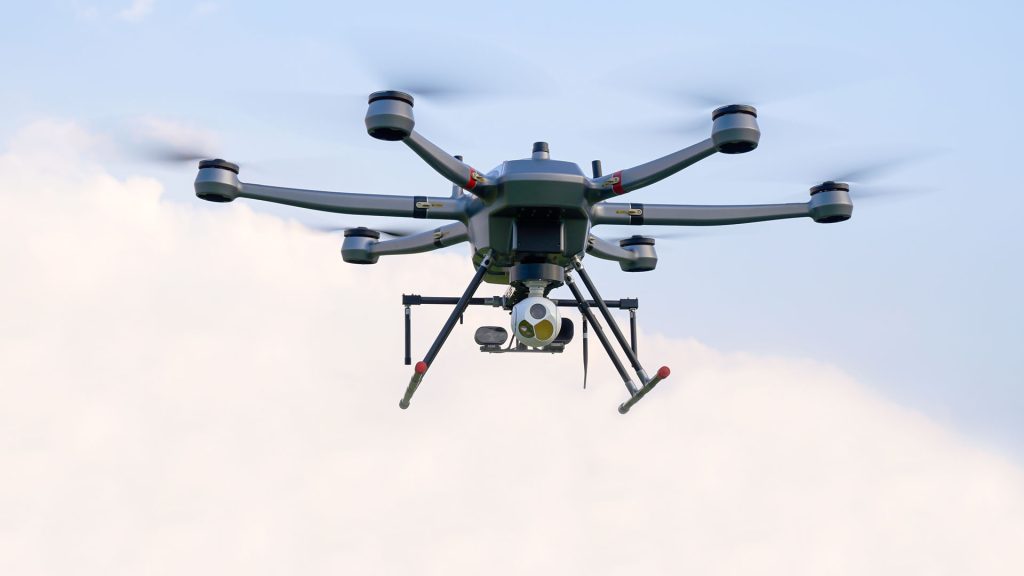
One of the remarkable features of the PH-20 is its integration with the 1500m long-range laser scanner called JoLiDAR-1500. This advanced scanner enables the drone to scan an extensive area of up to 7 km2, utilizing a laser frequency of 500kHz. With the PH-20, you can achieve an impressive single airband density of up to 238 points/m2, capturing image resolution down to 7.2cm.
CW-007: Best budget VTOL drone for photogrammetry
The CW-007 is a lightweight and user-friendly drone that can be operated by one person. Its modular design allows for quick assembly and disassembly in just two minutes, without the need for tools. With the CA-103 61-megapixel full-frame camera and the MSK-8 multispectral camera, it offers an extensive payload for capturing detailed aerial imagery.
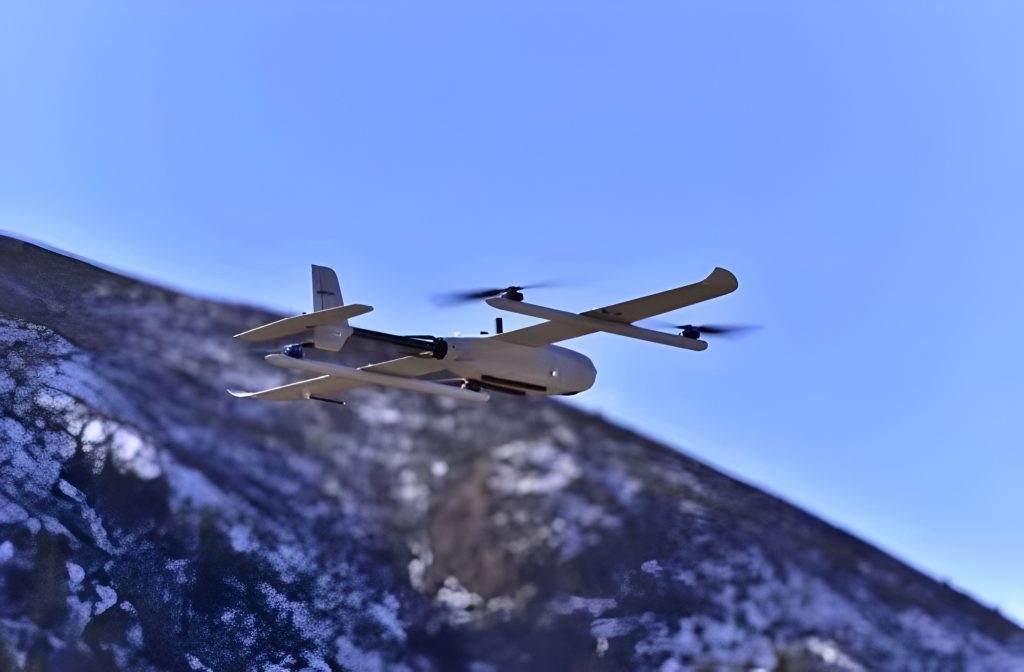
Equipped with RTK and PPK modules, the CW-007 achieves best-in-class absolute horizontal accuracy down to 1 cm (0.4 inches). It also boasts a flight time of up to 55 minutes, a cruise speed of 61.2 km/h, and can cover 4.5 km2 in a single flight, with a Ground Sampling Distance (GSD) as low as 5 cm/px.
CW-15: Best photogrammetry drone for 3D mapping
The CW-15 is an exceptional drone crafted specifically for aerial surveying and 3D mapping purposes. With surveyors in mind, this drone has been meticulously designed to cater to their needs. One of its standout features is the CA-103 aerial camera, which ensures that the images captured are incredibly sharp and detailed. By incorporating RTK and PPK modules, the CW-15 provides surveyors with real-time positioning data and guarantees centimeter-level absolute accuracy for image metadata.
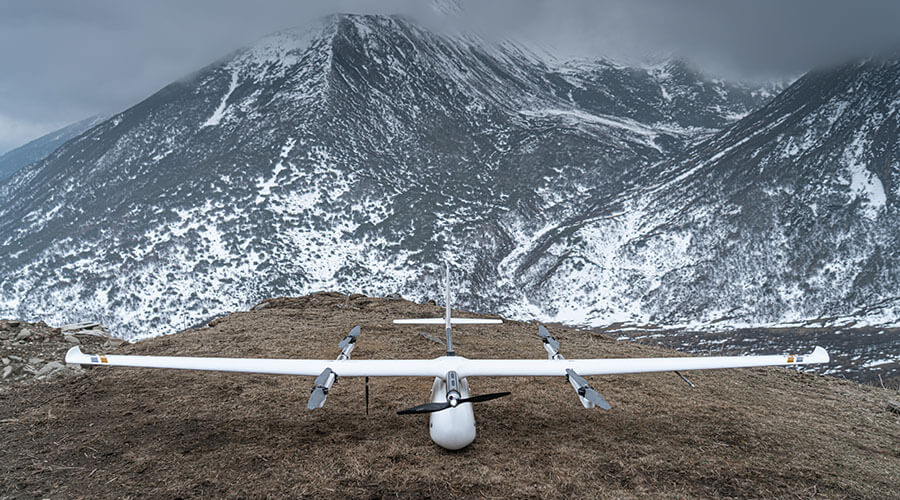
Moreover, the CW-15 boasts impressive flight times of up to 180 minutes, allowing for extended surveying missions without frequent battery changes. Its cruising speed of 61km/h further enhances efficiency and ensures swift coverage of large areas. Additionally, the drone's payload capability of 3kg opens up possibilities for various payload configurations, enabling it to adapt to different mapping applications depending on specific requirements.
CW-25E: Best mining photogrammetry drone
The CW-25E drone is a versatile and robust option for the mining industry. It offers a remarkable flight time of up to 240 minutes, a cruising speed of 72 km/h, and compatible payloads designed specifically for surveying purposes. Built to excel in harsh environments, it effortlessly performs in high altitudes, high humidity, low temperatures, and rainy conditions.
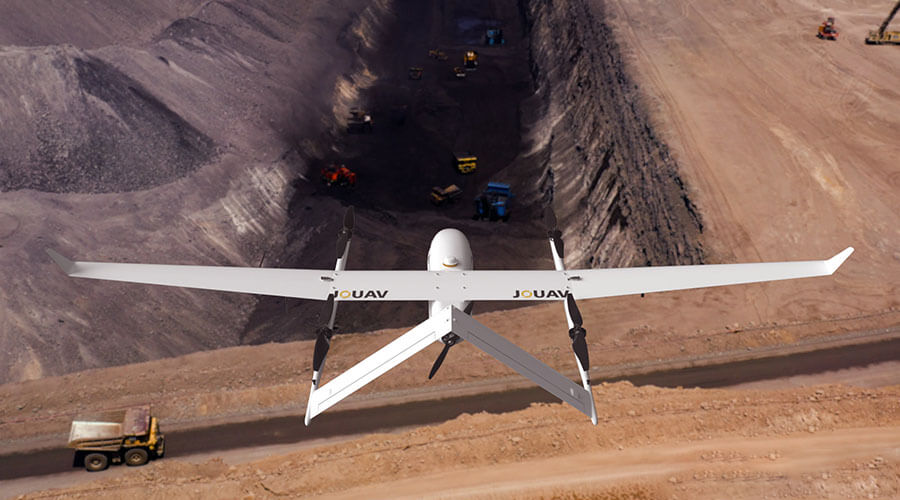
Equipped with advanced features like a 61MP full-frame camera, 225MP oblique camera, 1845 long-range LiDAR sensor, and aeromagnetic system, the CW-25E delivers unparalleled data acquisition and analysis capabilities. It captures high-resolution imagery, generates precise LiDAR data, penetrates obstacles, and detects magnetic anomalies. These capabilities enable accurate mapping, volumetric calculations, subsurface exploration, and optimized resource evaluation, revolutionizing mine planning, extraction processes, and exploration efforts.
CW-30E: Best heavy payload drone for most mapping projects
The CW-30E stands out as a reliable mapping drone that has garnered widespread recognition in the industry. One of its key strengths lies in its exceptional camera quality, complemented by the inclusion of PPK and RTK systems. These advanced features truly set this drone apart from its competitors. With an impressive maximum payload capacity of 10 kg, the CW-30E is capable of carrying a diverse range of high-performance payloads, including renowned options such as the CA-103 aerial camera, CA503R oblique camera, JoLiDAR-LR22S, and more.
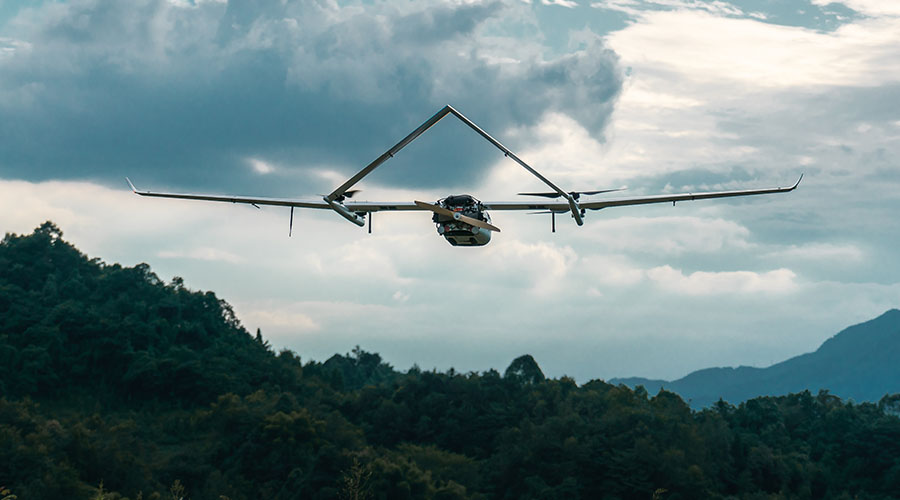
One notable advantage of the CW-30E is its integrated RTK and PPK capabilities, which enable centimeter-level accuracy in mapping tasks without the need for ground control points (GCPs). This streamlined approach significantly enhances efficiency and simplifies the overall mapping process. Moreover, the CW-30E offers the convenience of mobile platform takeoff and landing, making it particularly well-suited for maritime operations. By providing increased flexibility, this feature further contributes to the drone's efficiency in such scenarios.
Best drone photogrammetry software
There are several excellent drone photogrammetry software options available, each with its own set of features and strengths. Here are some of the top choices:
Pix4D: Pix4D is a popular and widely used photogrammetry software. It offers powerful 3D mapping and modeling capabilities, allowing you to create detailed and accurate models from drone images. Pix4D supports various drones and cameras, and it provides advanced features like point cloud editing, orthomosaic generation, and volumetric calculations.
Agisoft Metashape: Agisoft Metashape (formerly known as Agisoft PhotoScan) is another top choice for drone photogrammetry. It offers comprehensive photogrammetric processing capabilities, including dense point cloud generation, digital surface and terrain model creation, and orthophoto generation. It supports various input formats and provides advanced tools for mesh and texture editing.
DroneDeploy: DroneDeploy is a cloud-based drone mapping software that simplifies the photogrammetry workflow. It offers a user-friendly interface, allowing you to plan flights, capture images, and process data seamlessly. DroneDeploy provides features like automated image stitching, 3D model generation, and measurement tools, making it suitable for both beginners and professionals.
Workflows of photogrammetry drones
The workflows of JOUAV's photogrammetry drones typically involve the following steps:
Pre-flight preparation: The JOUAV drone automatically performs a pre-flight check to ensure that the drone is in working condition. This includes checking battery power, verifying proper sensor function, and confirming that the camera settings are appropriate for the desired output.
Flight operations: Flight operations are conducted using the JOUAV FlightSurv software. The operator launches the JOUAV drone and remotely controls its flight. The drone follows a pre-determined flight plan that outlines the area to be covered and the flight path. Parameters such as altitude, speed, and image overlap are considered when planning the flight.
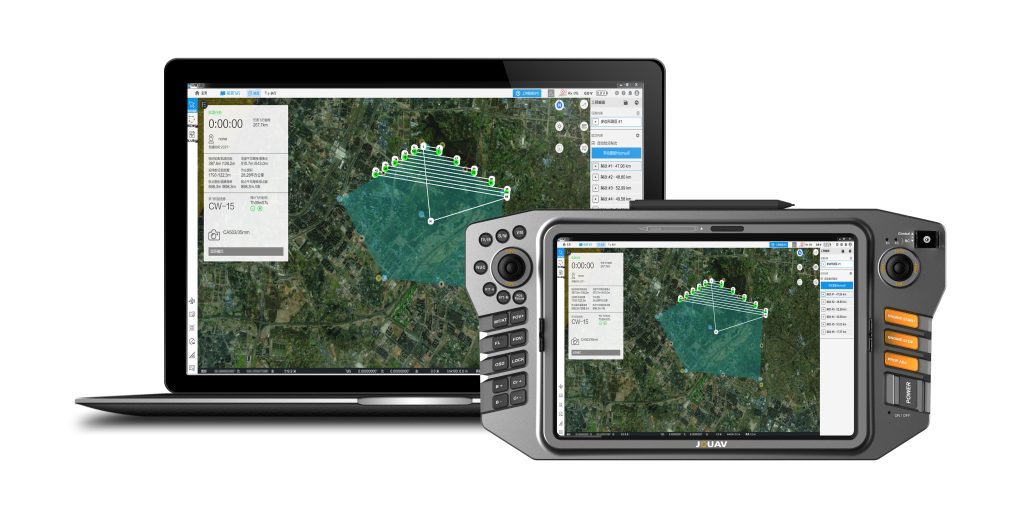
Image acquisition: During the flight, the drone captures a range of images from different angles and perspectives. The goal is to obtain a comprehensive set of photographs that cover the entire area of interest. These images serve as the raw data for the photogrammetric process.
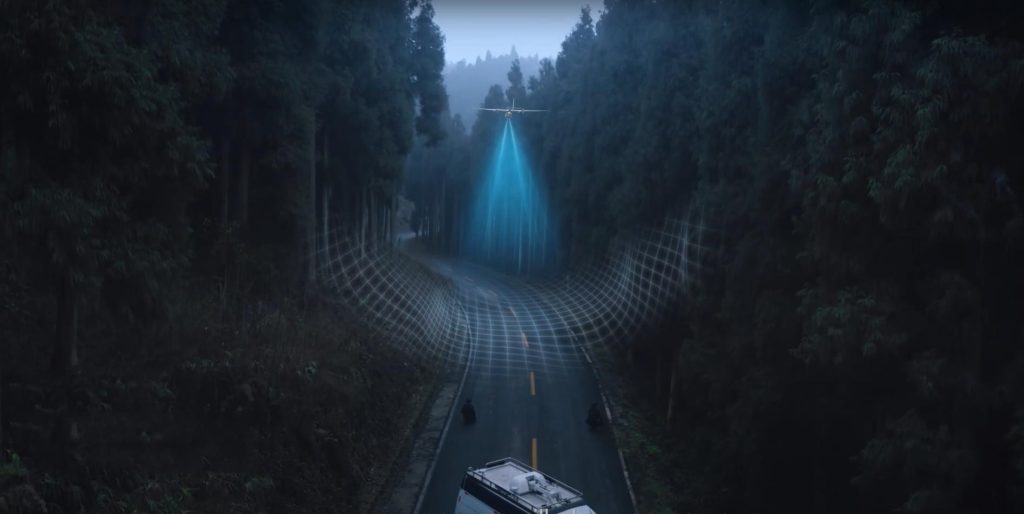
Data transfer and storage: Once the image acquisition is finished, the captured images are transferred and stored securely. They are usually downloaded from the JOUAV drone's memory or storage device to a computer or another data storage medium. JOUAV takes measures to ensure that the data is safely transferred and backed up, minimizing the risk of any loss or damage.
Data processing: After the initial data processing, further post-processing and analysis may be performed. JOUAV's drone data is compatible with mainstream post-processing software on the market. This software allows for advanced manipulation, refinement, and analysis of the captured data to extract valuable insights and generate accurate outputs, such as orthomosaics, 3D models, and point clouds.
Sharing and distributing photogrammetry outputs: With JOUAV's Cloud Platform, JoCloud, you can effortlessly share your photogrammetry outputs with your team members, clients, or other stakeholders, regardless of their geographical location. No more cumbersome file transfers or compatibility issues – simply grant access to specific individuals or groups, allowing them to view, analyze, and interact with the data in real time.
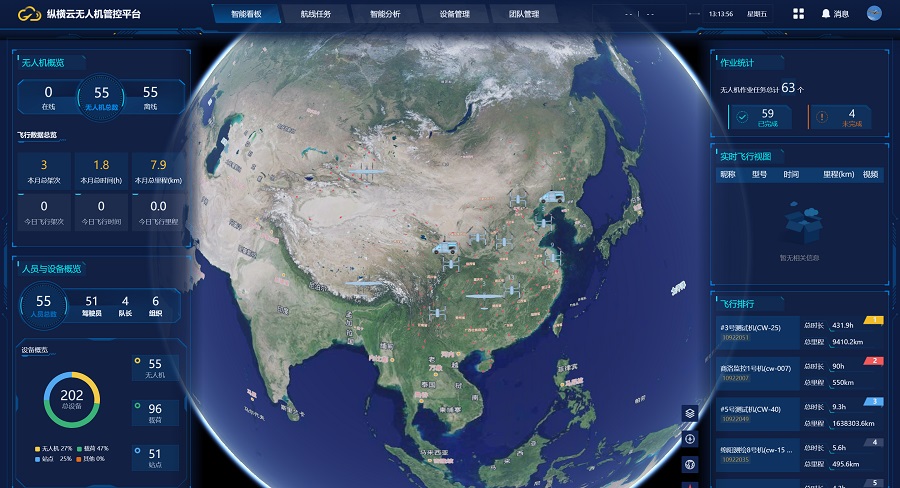
Photogrammetry vs. LiDAR: which is better?
Although digital photogrammetry is the most used measurement method by drone users around the world, drones with LiDAR technology have been gaining popularity for generating 3D models for a number of commercial applications.
If you want to understand more clearly the difference between photogrammetry and LiDAR, just keep reading!
What is a LiDAR and how does it work?
LiDAR, which stands for Light Detection and Ranging, is a remote sensing technology that has been gradually incorporated into aerial drone mapping for a range of specific applications.
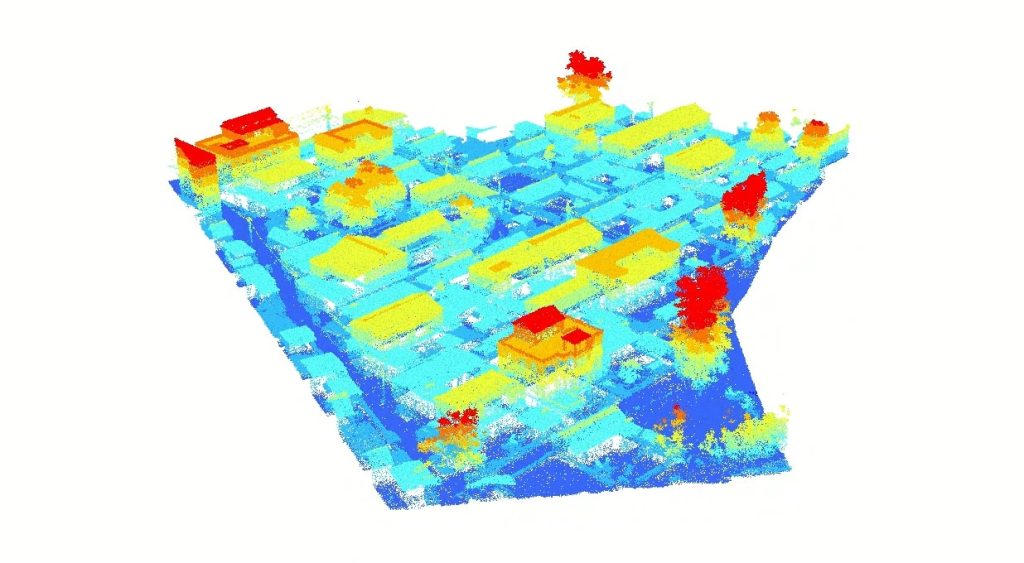
If aerial photogrammetry is based on the overlay of a large number of 2D aerial images used to generate a 3D model, the LiDAR approach is based on direct measurements. LiDAR uses a high-power laser to emit precise laser pulses at a target object. By measuring the timing and intensity of the returned pulse, it provides a dense cloud of points on the terrain and ground that can be used to generate a 3D model in specific software.
With the development of LiDAR technology, the weight and size of these devices have been reduced significantly, making the LiDAR drone increasingly common.
What are the main differences between drone photogrammetry and LiDAR?
Drone photogrammetry and LiDAR are both technologies capable of producing excellent data results for aerial mapping, however, they differ significantly in their price and applications will depend on many factors that must be evaluated beforehand to make a technical decision.
To give you an idea of how, when, and why to use each method, below you can find the main difference between drone photogrammetry and LiDAR.
Photogrammetry is cheaper than LiDAR
By far the main difference between these two aerial survey methods relates to the cost of acquiring the equipment.
A drone-based LiDAR system can cost you $60,000 or more for the hardware alone, as this equipment is far more expensive than conventional sensors and drones that carry out photogrammetry.
In fact, drone photogrammetry has been developed over the last few years and for a large proportion of the technical applications of drone surveying, you won't find much difference in detail or accuracy between it or the products produced by LiDAR.
This means that although LiDAR is a good option in very specific circumstances, the best option in terms of cost will always be traditional photogrammetry.
LiDAR can see through vegetation
LiDAR can provide high vertical accuracy when conducting aerial surveys in densely vegetated areas. This is because LiDAR emits a large number of laser pulses in the near-infrared spectrum which is able to penetrate dense foliage, directly acquiring high-precision 3D terrain data of the ground surface.
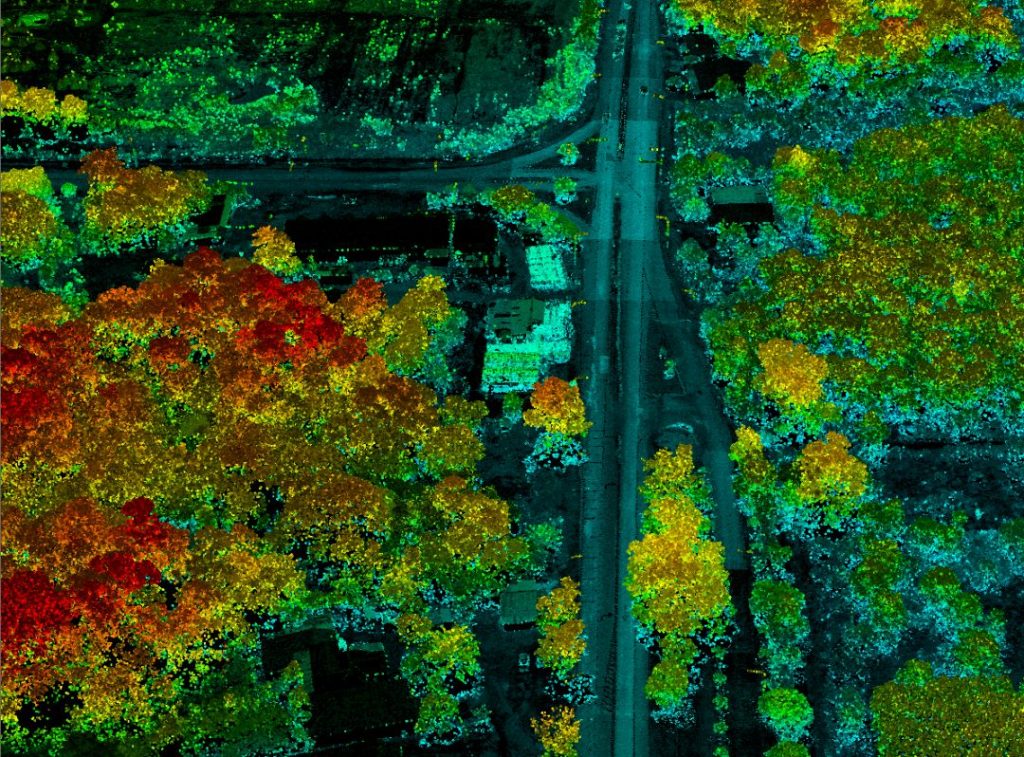
This makes LiDAR an ideal method for aerial surveys of forestry management. The device has replaced traditional forest inventory methods and has been used to estimate the amount of planted and native forest.
However, drone photogrammetry, as it is a very affordable method and its results are very close to LiDAR, is best suited for sparsely vegetated areas or for projects where 3D modeling of the forest structure is not strictly required.
For this reason, photogrammetry is used to manage volumes and structures in mining and civil construction. In these fields, conventional aerial photogrammetry methods are economically more accessible solutions, producing outputs with the same level of detail and accuracy.
LiDAR can be used in low-light or no-light environments
As they are self-illuminating devices, LiDAR systems can operate in low or no-light environments, and even perform aerial surveys at night.
Photogrammetry, on the contrary, is highly dependent on sunlight and aerial photogrammetry can only be carried out when there is sufficient light and is very sensitive to occlusion.
This can be frustrating when you will not be able to carry out aerial photogrammetry on cloudy overcast days as the clouds will block the sunlight from entering.
Under these circumstances, LiDAR would be the best option, even if they are more expensive equipment. Depending on the extent of the area to be mapped and the financial return these projects will provide, LiDAR systems can be a good long-term investment option.
LiDAR is the most accurate surveying solution
Regarding detail and accuracy, both LiDAR and photogrammetry can provide excellent results for 3D modeling.
While LiDAR systems typically have a higher level of detail. Nowadays, drone photogrammetry methods are producing very similar or even better outputs, which depend largely on the sensor quality, the proper execution of the flight, and the data processing.
LiDAR cannot capture RGB colors
The biggest disadvantage of LiDAR systems in terms of detail is that these systems cannot capture RGB colors and you will not identify the texture characteristics of the mapped area in the 3D model generated by LiDAR.
To overcome this obstacle, 3D models by LiDAR often use fake RGB colors, however, the visual quality is always not as good as the data results generated by drone photogrammetry. If you need a model that is consistent with the visual features, LiDAR will not work.
However, there are already LiDAR drones on the market that combine LiDAR technology and RGB sensors, and while they are a little more expensive than traditional models, it is possible to generate 3D models with true colors.
Tips for improving accuracy in drone photogrammetry
Photogrammetry drone workflows can be optimized to improve accuracy in capturing and processing data. Here are some tips:
- Use ground control points (GCPs): Incorporate ground control points into your survey area. These are physical markers with known coordinates that can be used to improve the accuracy of the photogrammetry output. Collect accurate GPS coordinates for these points and include them in your image capture.
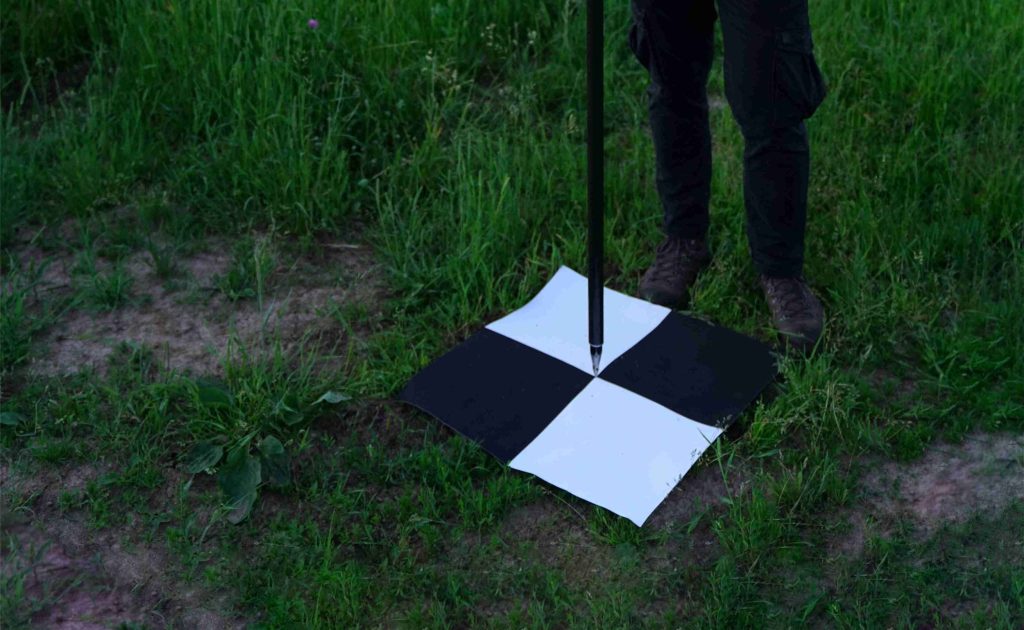
- Optimize camera settings: Set your camera to manual mode and adjust settings such as aperture, ISO, and shutter speed to achieve consistent exposure and image quality throughout the survey. Avoid using automatic exposure as it can lead to inconsistent results.
- Overlap and sidelap: Ensure sufficient overlap and sidelap between consecutive images. Overlap ensures proper coverage, while sidelap helps in matching and stitching the images. Aim for 70-80% overlap and 30-40% sidelap for optimal results, but adjust these values based on the specific requirements of your project.
- Consistent flight altitude: Maintain a consistent flight altitude throughout the survey to ensure consistent ground resolution. Use the appropriate flight planning software or tools to control the drone's altitude accurately.
- Check weather conditions: Choose suitable weather conditions for your flights. Avoid strong winds, rain, or poor visibility, as they can negatively impact the stability of the drone and the quality of the captured images.
- Quality control: Perform quality checks on the photogrammetry output. Validate the accuracy of the generated point cloud or 3D model by comparing it with ground control points or other reference data. This step helps identify and rectify any errors or inaccuracies.
Regulations and legal considerations for Photogrammetry drone
When engaging in photogrammetry drone operations, it is crucial to adhere to the applicable regulations and legal considerations to ensure safe and legal operations. The specific regulations may vary between countries and regions, so it's important to familiarize yourself with the regulations that apply to your location. However, here are some general regulations and legal considerations to keep in mind:
- Obtain necessary certifications and licenses: Depending on your jurisdiction, you may be required to obtain certifications or licenses to operate a drone commercially or for specific purposes. For example, in the United States, the Federal Aviation Administration (FAA) requires drone operators to obtain a Part 107 Remote Pilot Certificate for commercial operations. Familiarize yourself with the certification or licensing requirements in your area and ensure compliance.
- Register your drone: In many countries, drones that meet certain criteria must be registered with the appropriate aviation authority. Registering your drone is typically a straightforward process and helps ensure accountability and traceability in case of any incidents or accidents.
- Fly within visual line of sight (VLOS): Most regulations require the drone to remain within the pilot's visual line of sight during operations. This means you should be able to see the drone at all times without relying solely on the drone's camera feed or any other visual aids.
- Respect airspace restrictions: Familiarize yourself with airspace restrictions and regulations in your area. Certain airspace zones, such as airports, military installations, or other sensitive areas, may have restrictions on drone operations. Ensure that you comply with any airspace restrictions and obtain necessary permissions or waivers if required.
- Fly below maximum altitude limits: Different jurisdictions have specific altitude limits for drone operations. Typically, the maximum allowable altitude is below 400 feet (120 meters) above ground level, but this can vary. Ensure that you are aware of the maximum altitude limits and adhere to them during your operations.
- Follow privacy regulations: When conducting photogrammetry drone operations, it's important to respect privacy regulations and the rights of individuals. Be mindful of capturing imagery or data that may infringe upon privacy rights, and avoid flying over private properties without appropriate permissions or legal requirements.
- Obtain permissions and waivers: Depending on the nature of your operations, you may need to obtain permissions or waivers for specific activities. For example, flying in controlled airspace, flying at night, or conducting operations near people or structures may require special permissions. Check the specific requirements in your jurisdiction and seek the necessary approvals before proceeding.
- Insurance coverage: Consider obtaining appropriate insurance coverage for your drone operations. Drone insurance can help protect you against potential liabilities and mitigate risks associated with accidents or property damage.
How much does a photogrammetry drone cost?
The entire high-end photogrammetry system costs between US$ 4,000 and US$ 13,000. The accompanying UAV costs around US$10,000 to US$16,000. Additional costs include accessories for the drone, batteries, base station, and GPS, which can add up to US$10,000 in overall costs.
- Read more: How much does a drone cost? Here's a price breakdown



